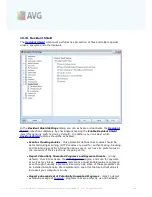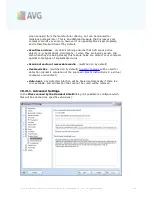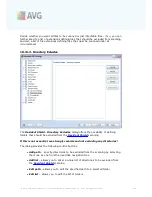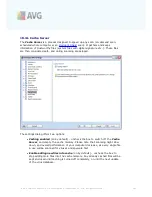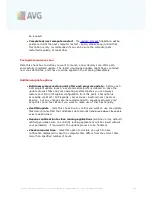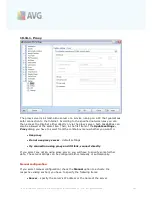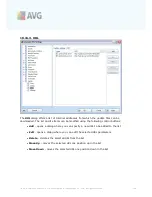
A V G 9 I nternet Sec urity © 2 0 1 0 C opyright A V G T ec hnologies C Z, s .r.o. A ll rights res erved.
1 4 0
o
Fixed host
- In this case, the program will always use the server
specified here. Please specify the address or name of your mail server.
The login name remains unchanged. For a name, you may use a domain
name (for example, pop.acme.com) as well as an IP address (for example,
123.45.67.89). If the mail server uses a non-standard port, you can
specify this port after the server name by using a colon as the delimiter
(for example, pop.acme.com:8200). The standard port for POP3
communication is 110.
·
Additional settings
- specifies more detailed parameters:
o
Local port
- specifies the port on which the communication from your
mail application should be expected. You must then specify in your mail
application this port as the port for POP3 communication.
o
Use APOP when available
- this option provides more secure mail server
login. This makes sure that the
E-mail Scanner
uses an alternative
method of forwarding the user account password for login, sending the
password to the server not in an open, but in an encrypted format using
a variable chain received from the server. Naturally, this feature is
available only when the destination mail server supports it.
o
Connection
- in the drop-down menu, you can specify which kind of
connection to use (regular/SSL/SSL default). If you choose SSL
connection, the data sent is encrypted without the risk of being traced
or monitored by a third party. This feature is also only available when the
destination mail server supports it.
·
E-mail client POP3 server settings
- provides brief information on the
configuration settings required to correctly configure your e-mail client (so
that the
E-mail Scanner
will check all incoming mail). This is a summary
based on the corresponding parameters specified in this dialog and other
related dialogs.
·
E-mail client POP3 server activation
- check/uncheck this item to activate
or deactivate the specified POP3 server


















